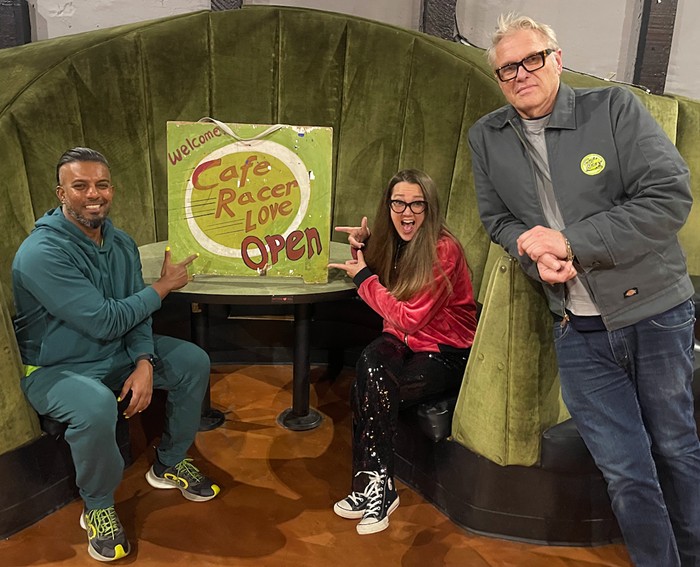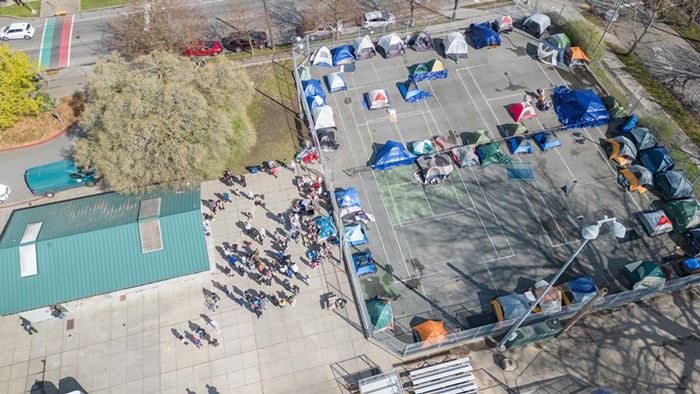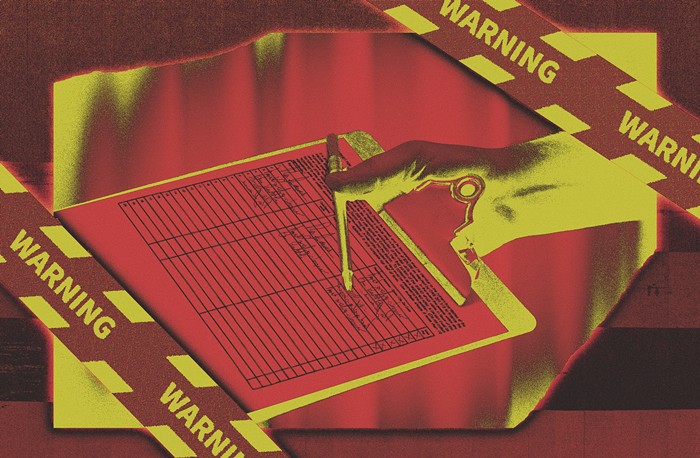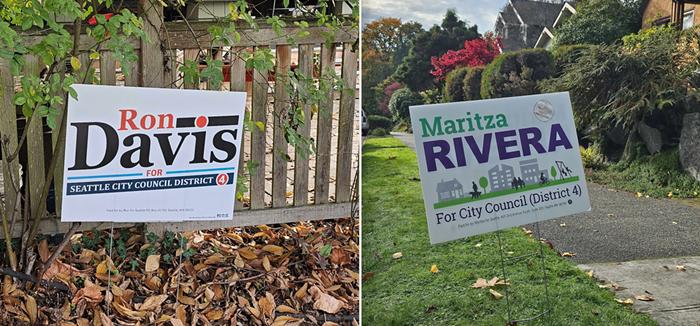This is your country.
This is the world we have built. And we should really start coming to terms with this.
On June 5, it all played out again. Another school shooting, this time on Seattle Pacific University's campus. Everything was horribly familiar. The mayor in a dark suit, speaking to cameras. The police tape, blowing in the breeze. Grown men in positions of power holding back tears. Students hugging each other. TV news vans, spiraling their big posts up in the air. Overhead, a helicopter. Thock-thock-thock-thock-thock-thock-thock.
It had been an impossibly beautiful, sunny June day—everything about it was extra-beautiful, until. College campuses are so grandly, old-fashionedly luxurious, all manicured lawns and flowers and budding youth. SPU sits right on a canal, where people were walking and biking and boating in the 70-degree weather. As the mayor has said, June on a campus is a time to celebrate; the transitional moment of forward-looking hope and backward-looking nostalgia is palpable.
But then it was a different kind of day, the kind with a before and after.
We know these days. This time, it was 26-year-old Aaron Ybarra, a man who police have now said, in court documents, "told detectives that he had been planning a mass shooting and wanted to kill as many victims as possible before killing himself." Ybarra's public defender, Ramona Brandes, has spoken of his long history of mental-health issues, his "delusions." The police laid out a simple, clear, chilling, and familiar explanation of what happened that day: Ybarra, armed with a shotgun and a knife, walked into an SPU building near Third Avenue West and West Nickerson Street and immediately opened fire. This time, a building monitor, 22-year-old engineering student Jon Meis, armed with pepper spray and split-second courage, subdued Ybarra as he was reloading his gun, saving countless people from certain harm.
Four students were rushed to the hospital. Nineteen-year-old freshman Paul Lee died.
The police arrived in mere minutes, paramedics minutes after. And, of course, not long after that, reporters and cameras.
Everyone plays their part. This is one of the real sicknesses of this kind of tragedy, that everything starts to look like a role. Truly, it is not. These are real people living through a traumatic, violent event. But to the disconnected nation, the viewers at home, it becomes a tableau, a pageant, a rerun. This kind of violence is a rerun for this country, even for this city, which has already seen new gun deaths in the days since the violence at SPU. We've seen this before. We will see it again.
Behind the scenes, TV news people fluff their hair a lot. Their camera operators grumble about them when they're not around. Everyone tries to elbow their way to the fronts of crowds. We all follow the police on Twitter. Students milling around are asked a half-dozen times if they were "there." Every tearful embrace is well-photographed.
Embrace, embrace, embrace. This is the kind of day where everyone walks around in pairs, in groups. Holding hands, leaning against, embracing. By evening, near the intersection full of crime tape, dozens upon dozens of students sat quietly on the lawn in circles. The air was still, the sun setting. People quietly sobbed. There was a lot of praying, eyes closed. Everyone was so young. Some adult with a name badge walked through the crowd, passing out tissues.
That's the other thing: The institution is ready for these things. Most institutions are now. And there's outrage to be had there, too—that we send generations to these campuses, and teach them to wear flip-flops in public showers and to practice safe sex and to never drink and drive and, oh yeah, here's how to go into lockdown. Here's what "shelter in place" means. The school's president and others said that a larger tragedy was averted in part because they had practiced this, drilled for this. And we've been doing that in schools for a long time now. Some days a fire drill, some days an earthquake drill, some days a we've-given-up-on-adequately-regulating-firearms-or-treating-mental-illness-so-you're-just-gonna-have-to-learn-to-duck drills. (I learned this in high school. There was an intercom code that meant, if we heard it, we were to close and lock the classroom door, turn out the lights, and stay away from the windows. Open the door for no one. Stay low.)
The evening of the shooting, a 7 p.m. prayer service at SPU's campus filled to overflowing. Let it be said: This community looks ready to heal itself. There were psalms and songs. The whole room sang along, harmonizing, louder and louder. "You are the everlasting God... You're the defender of the weak/You comfort those in need." And: "You make beautiful things/You make beautiful things out of us." The psalms were deliberately paired—Psalm 22, "My God, my God, why have you forsaken me," and Psalm 23, "The lord is my shepherd, I lack nothing." The air was thick with the small sounds of hundreds of people crying at once. People occasionally rushed from the room. A baby cried.
There was a lot of love in that room. Heads on other shoulders, closed eyes and whispered prayers, voices raised together. There were prepared handouts titled "When Bad Things Happen," about dealing with crisis and trauma in as healthy a way as possible. The people whose job it is to step in were ready to do so, and the community seems ready to hold each other.
But this isn't a new story, and it's not a new event, not an unusual event, not a surprising event. There was a double shooting the weekend before, in which two young men died. There was a dramatic spate of gun violence in the city just a month ago. City council president Tim Burgess pointed out that on the evening of the SPU shooting, he and the mayor had to choose which of two vigils for gun-violence victims to attend, since two were suddenly happening at exactly the same time. Indeed, the shootings barely paused for a day after SPU; early Saturday morning, another man was shot and killed in the International District. Mayor Ed Murray sent out another statement with another round of condolences, sounding horrified by the repetition, the regularity.
This is the world we've built. We're getting used to this, getting good at dealing with tragedies now. We have practice drills. We have prewritten pamphlets. We can play Mad Libs with the details—the casualty math, the weaponry, the location. But this is all familiar. God, even this frustrated piece of writing, the hey-isn't-this-all-a-bit-too-familiar article in the aftermath, it is also familiar. As night fell on June 6, already a very familiar kind of memorial was starting to build out on the corner of West Nickerson and Third, the beginning of it just a few bouquets leaned against a street pole, yellow crime-scene tape still waving in the background. The pile of flowers grew and grew. Candles appeared.
So this is our country. We've made it, and it seems like we're sticking with it. We're paying a price, which is sending generations out into a world where school is not safe—not at any level, elementary through college. The mall is not safe. The streets are not safe. Yes, there are things we can do to change course, steps we can take to end this epidemic, this continued massacre. Look at page 9, start there.
Maybe these recent shootings will become the "not one more" moment. But we just had one of those, at UC Santa Barbara, only weeks ago. A weeping father begging the country to let his son be the last one.
And yet here, now, once again, comes "one more." ![]()



















